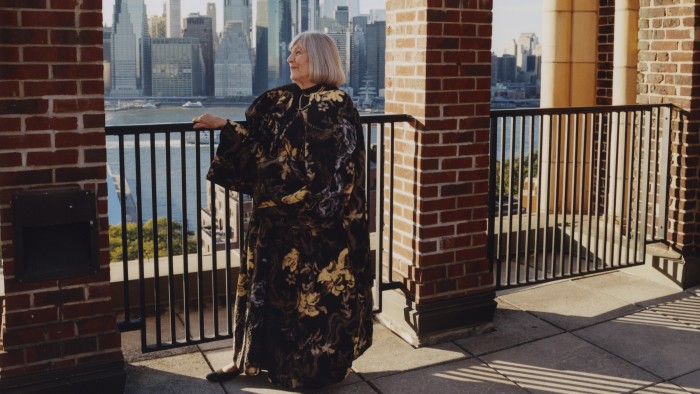The modern retirement home: not for retiring types

Once upon a time, the retirement home was a dreary place: three square meals, a cot, and orderlies in white uniforms were about the most you could hope for. The industrial facilities of the midcentury prioritised medicine over ambience and socialising, and the mood was more One Flew Over the Cuckoo’s Nest than Cocoon.
Today, though, the options are dizzying. “One of the biggest changes in the industry is continuing care centres,” or CCRCs, says Markus Schafer, a professor of sociology at Baylor University in Waco, Texas. “People can enter into a community, whether that’s a townhouse or cottage on the property, and transition when their needs change.”
According to the US Census Bureau, Americans aged 65 and over will constitute one in five of the population (20 per cent) by 2030. The UK’s Parliament predicts that this same demographic will increase to 27 per cent there by 2072. The same is true of the European Union (32.5 per cent by 2100), according to the European Commission, and in China 28 per cent of the population will be over 60 years old, according to the World Health Organization.

This ageing population, however, has brought with it new problems, none more so than near-epidemic levels of loneliness. In his 2023 health advisory, US surgeon general Vivek H Murthy warned that “social networks are getting smaller and levels of social participation are declining”; Americans reported having fewer close friends – almost half (49 per cent) had three or fewer close friends in 2021 compared to about a quarter (27 per cent) in 1990. In Great Britain, in 2022, nearly 50 per cent of adults reported experiencing loneliness, with 7.1 per cent saying it was “chronic”.
“Right now, more than a quarter of people aged 65 and over are living alone, and those numbers are steadily increasing,” says Schafer. “Many more boomers are divorcing later in life, not repartnered, widowed, not marrying, in more diverse family situations.” Yet as they age, they still want to come and go as they please.
Shared accommodation, or community living, offers a solution to both of these issues. The Watermark, the location for this HTSI shoot, is a resort-like tower for well-heeled seniors (aged 55 and older) in the storied Brooklyn Heights neighbourhood. It features wraparound terraces with views of Manhattan, chef-prepared meals and outings to Chama Mama, an upscale Georgian restaurant. It also offers on-site medical staff and help with emergencies. Its residents come from varied backgrounds: 80 per cent are women, 20 per cent are men (which is still more than in the usual retirement community). Carol Murphy, an 82-year-old resident, partakes in water aerobics twice a week and wine-fuelled gossip sessions with friends, while retired architect Brian Kaye, 68, is free to go and eat at the local Italian restaurant (81-year-old Joan Fry loves it too, but still refuses to give in and start playing bingo). The Watermark is one of several housing projects based on a shared community. In the UK, similar experiences are offered at Audley Binswood in Warwickshire, where there are 114 retirement properties centred round Binswood Hall, a Grade II-listed Victorian gothic mansion, and Grove Place Retirement Village, in the bucolic Hampshire countryside.

“This is kind of a new thing in human history,” says Schafer, “that we have this stretch of time where we can travel, enjoy our leisure and do the things we didn’t get to do in our working years.” He also views the trend of Americans becoming a nation of homebodies – a phenomenon Patrick Sharkey, a professor of sociology and public affairs at Princeton, noted in a well-publicised study – as part of the reason senior housing has become more, well, sociable. Mixed-use spaces address the pressing need for community. And as people live longer, the person-centred model that emerged in the 1980s, with its goal of enhancing the quality of life and care, is only becoming more relevant.
Of course, not everyone has access to high-end senior housing. (The Watermark’s studio apartments start at $8,000 per month, while a two-bedroom with “fantastic views of lower Manhattan”, says managing director Jen Tapner, costs $22,000 per month.) More work is needed to ensure that older people, particularly those in marginalised communities, don’t fall prey to loneliness. “People who are not able to afford or otherwise access these kinds of communities run the risk of becoming extremely isolated, perhaps housebound, and relying on the voluntary help of family and friends as their sole social contacts,” says Louise Hawkley, a senior fellow with NORC at the University of Chicago.

Like Schafer, she stresses the importance of spaces that foster a sense of belonging such as Tonic, the UK’s first LGBT+ retirement community in London’s Vauxhall (the residents of the 19 flats here enjoy teas and classes throughout the week). Similarly, there’s Stockholm’s Regnbågen (Rainbow), a cooperative housing rental association also focusing on LGBT+ seniors; Carino Care in Sydney, geared towards aged Chinese; and Kehilla Residential Programme, in Toronto, offering affordable housing to the city’s Jewish community. Hawkley also emphasises the need for a sense of belonging. “The best and most sophisticated of homes might not be the best home in terms of one’s feelings of social fit.” To ease loneliness, she explains, “you need to feel as though you are seen, you are valued – and you recognise that, you perceive it. Loneliness is always related to perception.”
The Watermark aims to combat loneliness with an extensive activities calendar that includes everything from morning walks and screenings to gratitude journalling and tai chi. “That feeling of connection is not only going to feel good, it’s going to make you feel more purposeful and give you more meaning in life,” says Hawkley. Feelings of connectedness may also stave off early mortality, poor cardio health, diminishing cognitive ability, greater likelihood of developing dementia and onset of diabetes.
The increasing integration of senior homes into communities is one positive trend Hawkley has seen recently. Premier Place at The Glenview, in Naples, Florida, recently converted its centralised nursing station into a neighbourhood space with a public reception area and dining. Likewise, Jade Tower, a CCRC in Shanghai, China, features on-street retail that’s accessible to pedestrians. “There’s more of an ebb and flow,” says Hawkley of these shared spaces, where residents do crafts alongside their neighbours. In other words, moving to a retirement home today doesn’t have to mean leaving the world behind. They “allow for a feeling of belonging to the rest of society”, says Hawkley. “Not that you’ve been cocooned.”
Joan Fry, 81
Retired archaeology professor from Charlottesville, Virginia
With her son now living two blocks away, it made sense for Fry to leave Virginia. “He said, ‘Come on, you can do this,’” she says, smiling. Leaving her “gorgeous, huge house” with 10,000 books was hard, but life in the city has charm. She has her own place. She comes and goes as she likes. She reads a lot. “I refuse to play bingo, I refuse to play Jeopardy,” she says. “If it’s not challenging in some way, I say to hell with it.”

Brian Kaye, 68
Retired architect from Washington, DC
The dapper architect wouldn’t think of living anywhere other than Brooklyn Heights. Before moving to The Watermark last year, he’d lived in a fifth-floor walk-up on Monroe Place since 1976. “It’s a very easy neighbourhood to live in, with great transportation,” he says. “I know a lot of the shop owners here because I’ve been here so long.” He loves that everybody is from someplace else; it reminds him of Washington, DC, his hometown. The cacio e pepe at Felice transports him back to the year he spent in Milan after college. “I’m living the life I want to live,” he says.

Carol Murphy, 82
Retired administrator from Kingston, PA
The soft-spoken Pennsylvania native clearly recalls her daughter’s plea: “Mom, you can’t live alone.” Murphy was wary of community housing. While she had endured a series of medical crises in recent years, she also knew that when her grandmother was put in a nursing home, the woman escaped in a wheelchair. Fortunately, she likes The Watermark.“I didn’t expect it to be like this,” says the Stitch ‘n Bitch regular, who loves being able to go downstairs and order whatever she wants. “It’s actually better.”

Estelle Velazquez, 82
Retired teacher from Manilla, Philippines
The Manilla native was floored when her son suggested she and her ailing husband move to The Watermark to be closer to a hospital. But she knew how she felt on those two-hour drives from East Hampton to Garden City. “It’s a relief, Langone [Health] is closer,” she sighs. “I don’t have to go and look for food, think about what to eat.” Besides, the people are kind. “I love this server,” she says, waving to one of the on-site staff. “Whenever she sees me, there’s a smile on her face.”

Dorothy Liss, 91
Retired bookkeeper from Brooklyn
Liss, a blue-eyed Brooklyn native, leads a busy social life. She gets up by 8am, then watches movies and visits her daughter, a literary agent, on nearby Bridge Street; she enjoys a “leisurely lunch” and regular walks around the balcony. In Riverdale, the Bronx neighbourhood she called home for 50 years, “we had no view”. Now, since May 2023, she gawks at the wide range of architectural styles all around, which fascinate her. “I didn’t know about Brooklyn Heights as a kid,” she says. “It’s classic.”

Anthony Selvadurai, 85
Retired professor from Sri Lanka
Selvadurai first dreamt of a retirement filled with trips to Sri Lanka, where he grew up, and to his brothers in Canada and Malaysia. But his wife fell ill, and his son, who lives nearby, suggested they move to The Watermark. The convenience of on-site physical therapy can’t be denied; he now works out three times a week and relishes breakfasts with his friends. “You have to take the good with the bad,” says Selvadurai, “and that’s where we are.”

Photographer’s assistant, Colin Barry-Jester. Stylist’s assistant, Brandes Tomlinson. Production, Leon Estrada. Special thanks to Kellie Liberto and Kim Harari at The Watermark Brooklyn Heights, NYC
#modern #retirement #home #retiring #types









